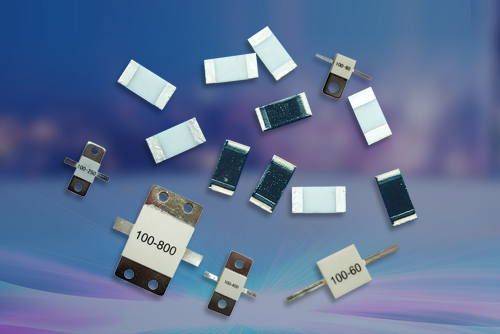

| More about RF Resistors |
|
What is RF Resistors? Simply put, the resistor used in radio frequency microwave communication system is called radio frequency resistor. Everyone should be clear about the radio frequency current, which is a short form of high frequency alternating current electromagnetic wave. The high frequency current which changes more than 10000 times per second is called radio frequency current. Radio frequency resistance is a passive device that can block the passage of this radio frequency current. It also converts electrical energy into heat or other forms of energy, in ohms, like ordinary resistance(Ω)。

Radio frequency resistors are generally differentiated by power, and there are many ways to classify them.
It can be classified according to its shape and structure:
● Patch resistance (patch resistance is divided into: single-electrode patch resistance and double-electrode patch resistance) ● Flange resistance (flange resistance is divided into: single lead flange resistance and double lead flange resistance) ● Table-mounted resistance (table-mounted resistance is divided into: single-lead meter-mounted resistance and double-lead meter-mounted resistance)
According to the production process, it can be divided into:
● Thick Film Radio Frequency Resistor ● Thin Film Radio Frequency Resistance
According to power classification, it can be divided into:
● High-power RF resistor (abbreviated as high-power resistor, generally referred to as power resistor above 60W) ● Low power radio frequency resistor (abbreviated as: low power resistor, commonly referred to as power resistor below 20W)
It can be classified by frequency:
High Frequency Radio Frequency Resistor (abbreviated as High Frequency Resistor, generally higher than 3GHz) .Low Frequency Radio Frequency Resistance
Materials for Making RF Resistors and Their Advantages and Disadvantages:
● Beryllium oxide and beryllium oxide have high thermal conductivity, almost the same as pure aluminum copper. Their thermal conductivity is 200-250W (m.K). They are the preferred materials for making radio frequency resistance. Its biggest disadvantage is that the powder is highly toxic, which makes it difficult to heal the wound. Therefore, the general manufacturers of radio frequency resistance are to buy shaped sheet materials, no longer secondary processing. This leads to the fact that when making RF resistors with beryllium oxide, they can only be printed on a single chip, which greatly reduces the production efficiency. ● Aluminum nitride and aluminum nitride are also a kind of material with high thermal conductivity. Their thermal conductivity is about 20W/m.K. They have the advantages of good mechanical properties, higher flexural strength than alumina and beryllium oxide ceramics. Because the material is non-toxic, they can be printed in tandem, which can greatly improve production efficiency. At present, they are the preferred materials for high-power radio frequency resistance. ● Alumina and alumina are the preferred materials for low-power patch resistors, because their thermal conductivity is about 1/5 of that of aluminum nitride, they are seldom used in the selection of high-power RF resistors. |
Product Categories
RF Isolators
RF Circulators
Coaxial Fixed Attenuators
Coaxial Fixed Terminations
High Power RF Attenuators
Copyright © 2020 Kete Microwave Electronics Co.,Ltd. All Rights Reserved.
